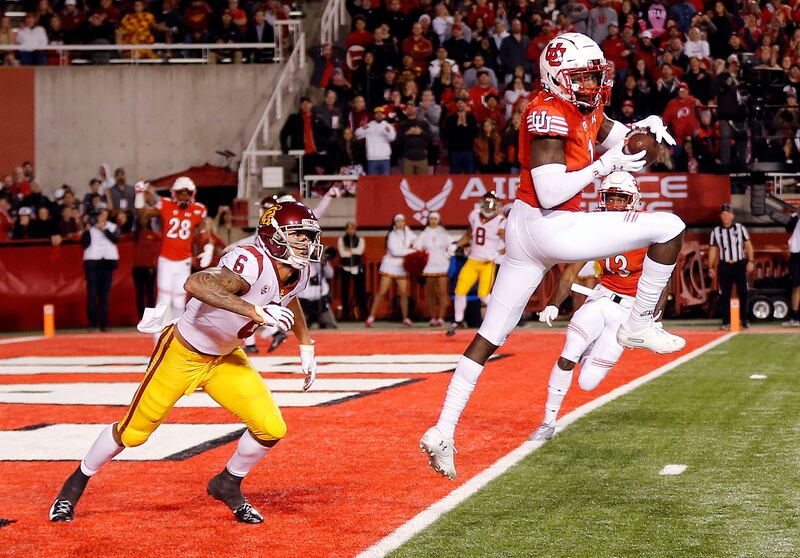SALT LAKE CITY — The invitations for the NFL combine are out and it confirmed what we already know about the state of in-state football and The Rivalry.
Utah is widening the gap on BYU, and the rivalry has completely flipped in the last decade.
Utah puts its talent on the defensive side of the ball and has for many years.
The NFL Scouting Combine is the annual dog and pony show where college players deemed draft material are measured, tested, prodded and otherwise evaluated for the NFL draft in April. A school-record nine players from the University of Utah recently received invitations to the combine. Another in-state school, Utah State, received three invitations. BYU received — well, this is embarrassing — zero.
The best way to compare programs of course is on the field, where the Utes have won their last nine games against BYU and 19 of their last 26, after being dominated by BYU in similar fashion the previous two decades.
The turn of fortunes is further reflected in the NFL draft, which can hardly be a surprise. It’s a convenient way to quantify talent, as you might expect, and a reflection of the team’s strength. Utah has had 24 players drafted since joining the Pac-12 nine years ago (beginning with the 2012 draft). During that same period of time — which began with BYU becoming an independent — the Cougars have had only six players drafted, and Utah State, considered by most to be an inferior program, has had 11 draftees.
The accompanying box illustrates the dramatic reversal between BYU and Utah:
BYU, Utah football comparison
| Years | Draft picks, Utah-BYU | Wins, Utah-BYU |
|---|---|---|
| 2010-19 | 32-8 | 83-77 |
| 2000-09 | 23-21 | 86-81 |
| 1990-99 | 12-19 | 71-86 |
| 1980-89 | 12-39 | 54-102 |
| 1970-79 | 16-27 | 44-71 |
It’s no secret that Utah, under head coach Kyle Whittingham, has earned a good living with strong defenses, and this past season was no exception. Of the nine Utah players invited to this year’s combine, eight are defensive players — edge rusher Bradlee Anae, linebacker Francis Bernard, defensive tackles Leki Fotu and John Penisini, and defensive backs Julian Blackmon, Terrell Burgess, Javelin Guidry and Jaylon Johnson.
“It is not hard to figure out why we were formidable on defense this past year and why we had statistically one of the best defenses we have ever had at Utah,” Whittingham told Deseret News beat writer Dirk Facer.
It’s also not hard to figure out why the Utes’ offense never measures up to the Utes’ defense and tends to struggle from year to year. The Utes have gone through offensive coordinators like office temps searching for answers, but it might be as simple as putting their best talent on defense, at the expense of the offense.
Since Whittingham’s first draft in 2006, the Utes have had 40 players selected in the NFL draft — 15 on offense, 23 on defense and two on special teams. If the nine players invited to this year’s combine are drafted, that would make the draft score: 16 offense, 31 defense, two special teams.
Whittingham, a former defensive coordinator and linebacker, has certainly succeeded as a head coach, but it’s tempting to wonder if the Utes would have won more games if they had a little more talent on offense.
How else do you explain the discrepancy in performance? In the nine years since joining the Pac-12, the Utes have finished an average of fourth in points allowed per game and third in yards allowed per game in the league’s defensive statistics, finishing first or second seven times between the two categories. On offense, they have finished an average of eighth in points scored and ninth in total yards in the league’s offensive statistics, finishing in the bottom third nine times between the two categories.
This season it appeared the Utes had finally solved their chronic offensive problems by averaging 38.5 points during a seven-game tear through the Pac-12 schedule, but in the final two games of the season — the Pac-12 championship game and the Alamo Bowl — they scored 15 and 10 points, respectively, and were routed.
Either way, no matter which side of the ball the Utes are loading up, they are producing a lot of draft-worthy players and winning games.


